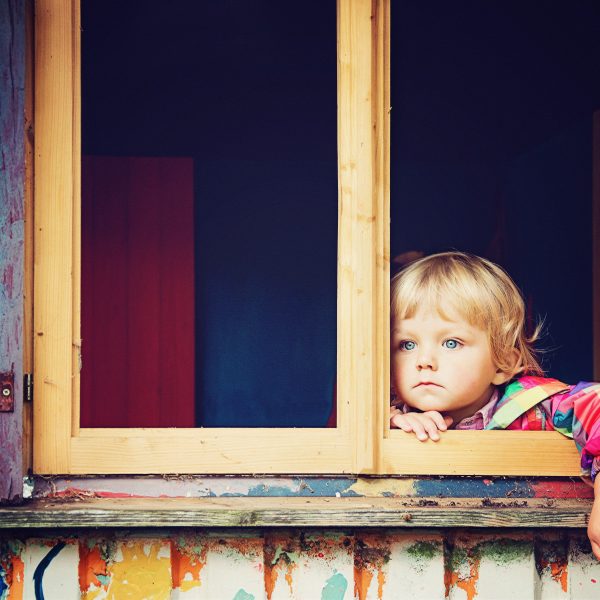Washington study gives new insights about preferences of transgender children

A University of Washington, Seattle (UW) study recently published in the Proceedings of the National Academy of Sciences has found that transgender children will gravitate toward the toys, clothing and friendships stereotypically associated with the gender they identify as, regardless of how long they have actually lived as a member of that gender.
The findings stem from the largest study of socially-transitioned transgender children in the world, conducted by researchers at UW, and show that gender identity and gender-typed preferences manifest similarly in both cis- and transgender children, even those who recently transitioned.
Cisgender is a term for people whose gender identity matches the sex that they were assigned at birth. For example, someone who identifies as a woman and was assigned female at birth is a cisgender woman. The term cisgender is the opposite of the word transgender.
For the study, more than 300 transgender children from across the United States, as well as nearly 200 of their cisgender siblings and about 300 unrelated cisgender children as a control group were followed. The study is believed to be the first to report on all of the participants in the TransYouth Project, launched in 2013 by UW professor of psychology Kristina Olson.
The transgender children in the study, all of whom enrolled between the ages of 3 and 12 years of age, had socially — but not medically — transitioned when they participated: they had changed their pronouns and often their first names, as well as dressing and playing in ways associated with a gender other than their sex at birth.
Researchers met individually with participants and their parents at participants’ homes, conferences and camps. Participants were asked about specific aspects of life that are typically connected to gender — clothing, toys and friends.
The researchers also evaluated participants’ sense of their own gender identity. While the team observed some variability in how strong children’s preferences and identities were, the transgender children showed, on average, strong preferences and behaviors associated with their current gender, just as the cisgender children with whom they were compared.
Lead author Selin Gülgöz said that the transgender children showed “strong identities and preferences that are different from their assigned sex” adding “there is almost no difference between these trans- and cisgender kids of the same gender identity — both in how, and the extent to which, they identify with their gender or express that gender.”
Dr Olson, senior author of the study said that while in both groups there were, for example, some ‘tomboys’, on average, most transgender girls, like their cisgender counterparts, wore stereotypically feminine clothing, chose toys such as dolls to play with, preferred playing with female playmates, and identified themselves clearly as girls, and not boys.
Of the transgender and cisgender control group participants, about one-third were boys, and two-thirds were girls; the average age was eight years. Among the cisgender siblings, the average age was also eight, with slightly more boys than girls.
The finding that transgender children’s gender identity was generally equivalent to that of cisgender children was based on analysis of the survey and behavioural data.
When asked to identify their gender, an equivalent percentage of cisgender and transgender children — 83 per cent and 84 per cent, respectively — named their current gender. (Researchers noted that among the youngest participants in all groups, this question often resulted in a less definitive answer like “I don’t know.”)
The similarities among transgender and cisgender children on the various measures were somewhat surprising, researchers said, because transgender children, unlike their cisgender counterparts, were early in life treated as a gender other than the one they currently identify as.
As part of the study, researchers asked parents for photos of their child from birth through toddlerhood at typical social events such as birthdays and holidays to capture information such as what the child wore or what their room looked like.
These images helped show that transgender children were initially socialised among families and friends as the gender associated with their sex at birth. However, years later there appears to be no impact of that early sex-specific socialisation. The results suggest that years later, the impact of this early sex-specific socialisation is not apparent on these measures of children’s gender preferences and identities.
This suggests that transgender children may be self-socializing to learn how to “be” their current gender, Ms Gülgöz said.
“Children aren’t passive about their environment. Once they have a sense of their gender identity, they will look for cues from their environment, noticing what society’s expectations are, and attending to information about the gender they identify as,” she added.
How — and for how long — a transgender child was treated as their assigned sex does not appear to affect their current gender identity and expression, Ms Gülgöz said, noting “we’re not seeing any increases or decreases over time in how strongly transgender children identify with their current gender”.
This study did not include children who use nonbinary pronouns like “they” or who came out as transgender later in life. Further, all members of the study had at least some family support of their transgender identity. Whether the present findings would extend to these other groups of participants is currently unknown, Dr Olson cautioned.
“Our data thus far suggest that the act of transitioning probably isn’t affecting gender identity one way or the other,” Dr Olson said.
For more information, the study may be reviewed here.
Popular

Practice
Provider
Quality
Research
Workforce
New activity booklet supports everyday conversations to keep children safe
2025-07-10 09:00:16
by Fiona Alston

Quality
Practice
Provider
Research
Workforce
Honouring the quiet magic of early childhood
2025-07-11 09:15:00
by Fiona Alston

Quality
Practice
Provider
Workforce
Reclaiming Joy: Why connection, curiosity and care still matter in early childhood education
2025-07-09 10:00:07
by Fiona Alston












